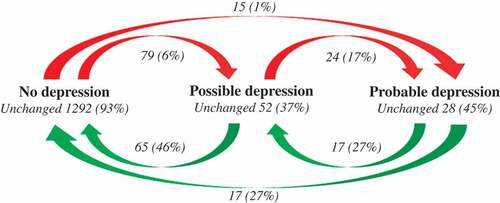Figures & data
Table 1. Sociodemographics and patient-reported outcome measures (PROMs) for the spondyloarthritis patients in the 2009 and 2011 cohorts (n = 1629).
Table 2. Logistic regression analysis of stable disease vs improving to non-disease based on the Hospital Anxiety and Depression Scale (HADS) as the dependent variable and all independent variables entered separately in the model.
Table 3. Logistic regression analysis of stable non-disease vs deteriorating to possible or probable disease based on the Hospital Anxiety and Depression Scale (HADS) as the dependent variable and all independent variables entered separately in the model.


